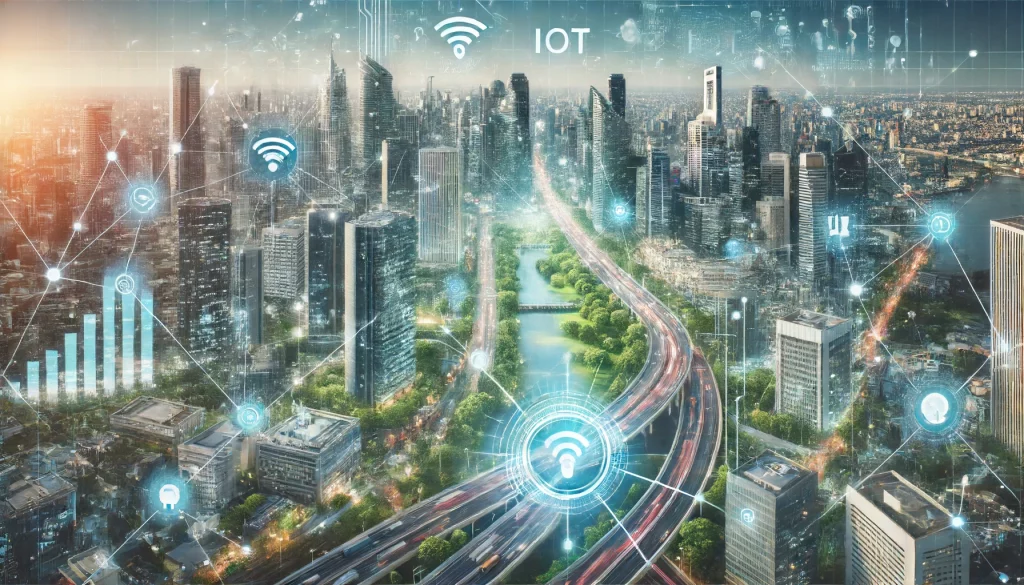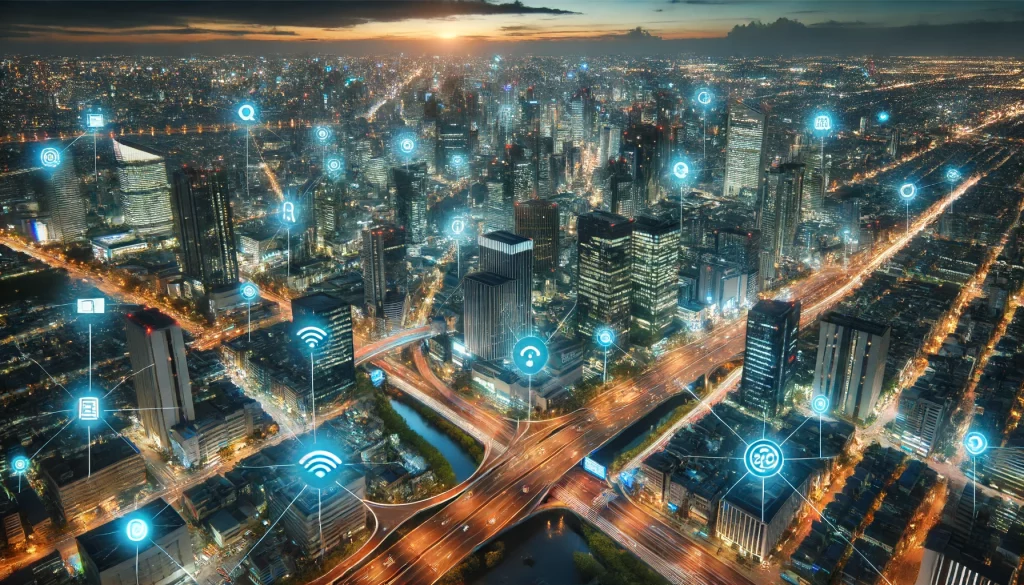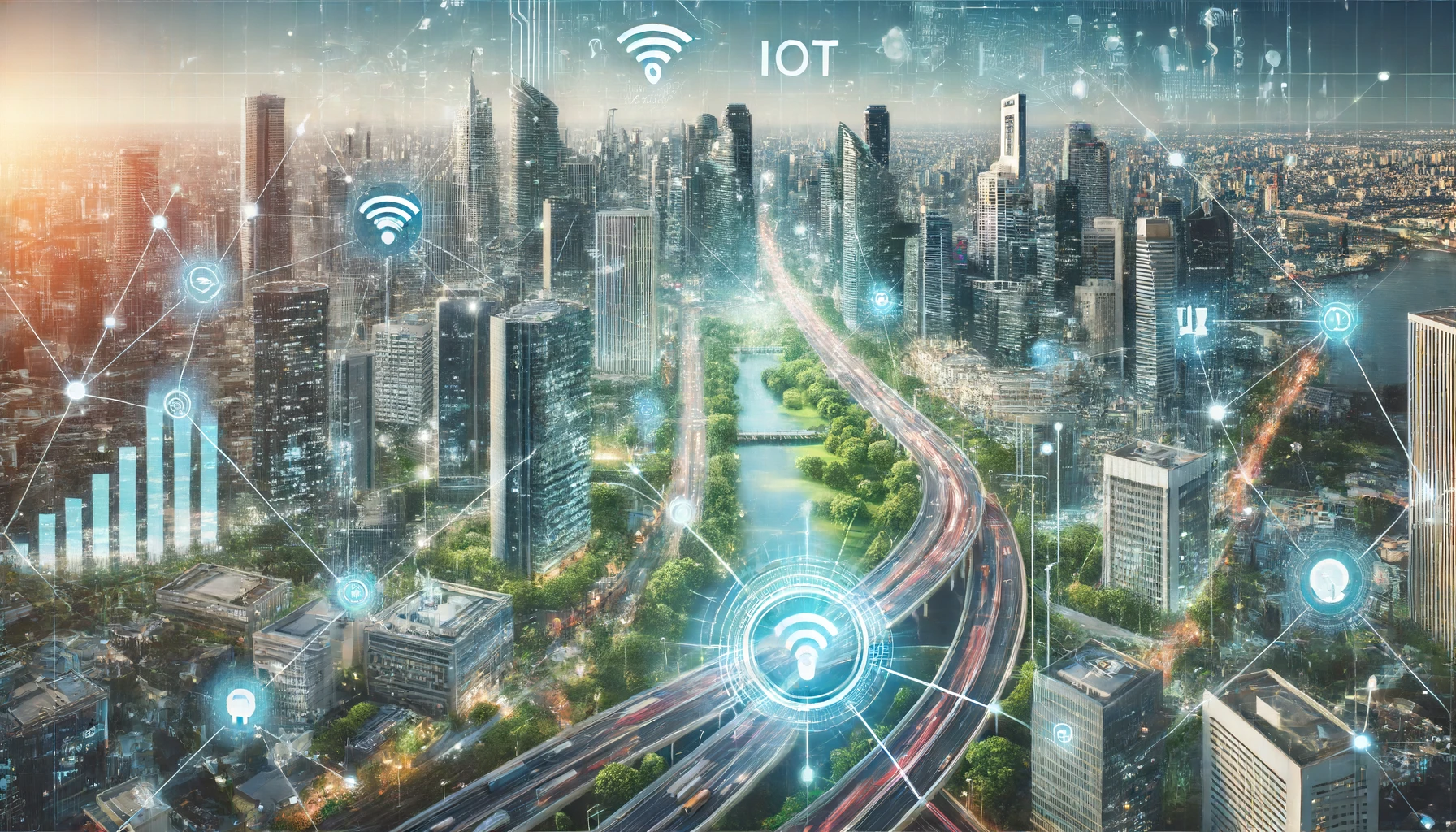Urbanization is rapidly transforming the way we live, work, and interact with our environment. As cities expand, the need for smarter, more efficient urban management systems becomes paramount. Enter the concept of smart cities—urban areas that leverage cutting-edge technologies to enhance the quality of life for their inhabitants. Central to this transformation is Information Technology (IT), which plays a crucial role in integrating various aspects of city life through digital innovation. In this article, we delve into the pivotal role of IT in smart cities, focusing on digital innovation, urban computing, the Internet of Things (IoT), and sustainable development. By examining how these technologies are reshaping urban spaces, we uncover the profound impact IT has on creating more efficient, livable, and sustainable cities for the future.
Understanding Smart Cities
Definition and Overview
A smart city is an urban area that utilizes various types of electronic methods, voice activation methods, and sensors to collect specific data. This data is used to efficiently manage assets, resources, and services. The primary goal of a smart city is to improve the quality of life for its citizens by using smart technology to enhance urban operations and services, foster economic growth, and improve the urban environment. Smart cities are characterized by their integration of Information and Communication Technology (ICT) in ways that enable more efficient and effective city management and services. These cities leverage technologies such as the Internet of Things (IoT), big data analytics, and urban computing to collect and analyze data from a multitude of sources. This data-driven approach helps in making informed decisions that enhance urban living.
Key Components
Digital infrastructure forms the backbone of a smart city. This includes a network of connected devices and systems that communicate and coordinate with each other to manage city functions. High-speed internet, robust wireless networks, and cloud computing capabilities are essential components of this infrastructure. IoT devices and sensors are pivotal in smart cities. These devices collect real-time data on various aspects such as traffic flow, air quality, energy usage, and public safety. For instance, smart traffic lights can adjust their timing based on real-time traffic conditions to reduce congestion and improve traffic flow (MDPI) (UNDP). Big data and analytics play a crucial role in smart cities by transforming vast amounts of raw data into actionable insights. This data comes from various sources, including social media, government records, and IoT devices. Through sophisticated analytics, city managers can identify patterns and trends, predict future scenarios, and make data-driven decisions to improve urban living conditions (MDPI).
The Role of IT in Smart City Development
Urban Computing
Urban computing refers to the interdisciplinary field that involves the collection, integration, and analysis of urban data to improve the efficiency and quality of city life. It combines aspects of computer science, urban studies, and environmental science to create smart solutions for urban challenges. Urban computing supports various smart city operations by enabling real-time monitoring, data analysis, and decision-making processes (MDPI). Urban computing systems gather data from multiple sources, such as sensors, social media, and public records, to provide a comprehensive view of city dynamics. This data is then used to optimize city functions like traffic management, energy distribution, and public safety. For example, by analyzing traffic patterns, urban computing can help reduce congestion and improve public transportation efficiency.
Internet of Things (IoT)

The Internet of Things (IoT) plays a critical role in the functioning of smart cities. IoT refers to the network of physical objects embedded with sensors, software, and other technologies to connect and exchange data with other devices and systems over the internet. In smart cities, IoT devices are used extensively to monitor and manage urban infrastructure (UNDP). Real-world examples of IoT applications in smart cities include smart traffic management, where IoT sensors installed at traffic signals and roadways collect data on vehicle flow, which is analyzed to optimize traffic light timings and reduce congestion. For instance, cities like Amsterdam and Barcelona have implemented smart traffic systems that adapt in real-time to traffic conditions. Smart lighting is another example, where streetlights equipped with IoT sensors can adjust their brightness based on the presence of pedestrians or vehicles, thus saving energy and reducing costs. Cities like Los Angeles have adopted smart street lighting systems that have significantly cut down on energy consumption. Environmental monitoring also benefits from IoT devices, which are used to monitor air quality, noise levels, and weather conditions. This data helps city planners to address environmental issues proactively. For example, Chicago’s Array of Things project uses a network of sensors to collect data on environmental conditions across the city.
Big Data and Analytics
Big data analytics is crucial for the operation and management of smart cities. It involves the process of examining large and varied data sets to uncover hidden patterns, correlations, and insights. This information is vital for making informed decisions that enhance urban services and infrastructure (MDPI) (UNDP). For instance, Barcelona has implemented a big data platform that integrates information from various municipal services. This platform helps in optimizing public transportation, managing energy consumption, and improving waste collection. By analyzing data from different sources, Barcelona has been able to enhance its overall efficiency and sustainability. Similarly, New York City uses big data analytics to improve its public safety operations. The city’s Domain Awareness System aggregates data from surveillance cameras, license plate readers, and other sensors to monitor and respond to potential threats in real-time. This system has been instrumental in reducing crime rates and improving emergency response times. Big data and analytics enable cities to predict and respond to urban challenges more effectively. By leveraging data-driven insights, smart cities can optimize resource allocation, enhance public services, and improve the overall quality of life for their residents.
Sustainable Urban Development
Environmental Benefits
Information Technology (IT) is instrumental in promoting sustainability in smart cities by reducing carbon footprints and enhancing resource efficiency. Smart cities utilize IT to monitor and manage environmental factors such as air quality, energy consumption, and waste management. By implementing smart grids, for example, cities can optimize energy distribution, reduce energy wastage, and integrate renewable energy sources more effectively (MDPI) (UNDP). For instance, cities like Singapore and Seoul have adopted smart waste management systems that use IoT sensors to monitor waste levels in bins and optimize collection routes. This approach not only reduces the fuel consumption of waste collection vehicles but also ensures timely waste disposal, thus preventing overflow and reducing environmental pollution. Smart buildings equipped with automated systems can adjust lighting, heating, and cooling based on occupancy and weather conditions. For instance, The Edge in Amsterdam is known as one of the smartest and most energy-efficient buildings in the world, utilizing IoT technology to reduce energy consumption and enhance occupant comfort.

Economic and Social Impacts
The integration of IT in smart cities fosters economic growth by creating new business opportunities, improving operational efficiencies, and attracting investment. Smart city initiatives can lead to significant cost savings in public services, such as reduced energy costs through smart grids and improved efficiency in public transportation systems (MDPI) (UNDP). For example, Barcelona’s smart water management system has reduced water leakage and saved millions of euros annually. Similarly, Stockholm’s smart traffic management system has led to reduced travel times and lower vehicle emissions, contributing to economic savings and environmental benefits. IT in smart cities also improves the quality and accessibility of public services. For example, smart healthcare systems enable remote monitoring and telemedicine, providing better healthcare access and reducing the burden on hospitals. Smart city technologies contribute to a higher quality of life by ensuring cleaner environments, safer neighborhoods, and more efficient public transportation. Citizens benefit from reduced pollution, improved public safety, and greater convenience in their daily lives.
Conclusion
In conclusion, IT plays an indispensable role in the development and operation of smart cities. By integrating digital infrastructure, IoT devices, urban computing, and big data analytics, smart cities can enhance their efficiency, sustainability, and livability. The environmental benefits of IT, such as reducing carbon footprints and optimizing resource use, are complemented by the economic and social advantages, including cost savings, improved public services, and better quality of life for citizens. Despite the challenges of data security, privacy, and infrastructure scalability, emerging technologies like AI, ML, and blockchain offer promising solutions for the future of smart cities. As these technologies continue to evolve, they will drive further innovations, making urban spaces more intelligent, adaptive, and responsive to the needs of their inhabitants. The journey towards smarter cities is not without its hurdles, but the potential rewards make it a worthwhile endeavor for urban planners, policymakers, and citizens alike.
FAQs: Digital Innovation in Urban Spaces: The Crucial Role of IT in Smart Cities
1. What are the primary technologies driving smart city development?
The primary technologies driving smart city development include the Internet of Things (IoT), big data analytics, artificial intelligence (AI), machine learning (ML), and blockchain technology. IoT devices collect real-time data from urban environments, which is then analyzed using big data analytics to provide actionable insights. AI and ML enhance the efficiency of city operations through predictive analytics and automated decision-making. Blockchain technology improves data security and transparency by providing a decentralized and tamper-proof ledger for recording transactions (MDPI) (UNDP).
2. How do smart cities improve environmental sustainability?
Smart cities improve environmental sustainability by optimizing resource use and reducing carbon footprints. IT enables real-time monitoring and management of environmental factors such as air quality, energy consumption, and waste management. For instance, smart grids optimize energy distribution and integrate renewable energy sources more effectively. IoT sensors in smart waste management systems help monitor waste levels and optimize collection routes, reducing fuel consumption and pollution. Additionally, smart buildings with automated systems can adjust lighting, heating, and cooling based on occupancy and weather conditions, significantly reducing energy usage (MDPI) (UNDP).
3. What are some challenges faced by smart cities?
Smart cities face several challenges, including data security and privacy issues, infrastructure scalability, and the integration of new technologies. As cities collect and analyze vast amounts of data, the risk of data breaches and cyber-attacks increases. Ensuring the security and privacy of sensitive information is crucial for maintaining public trust. Additionally, as smart cities expand, there is a need for scalable infrastructure that can accommodate increasing data volumes and more complex applications. Upgrading or replacing legacy systems to integrate new technologies seamlessly requires significant investment and careful planning (MDPI) (UNDP).
4. How can AI and machine learning benefit smart cities?
AI and machine learning can significantly benefit smart cities by enabling real-time decision-making, predictive maintenance, and personalized services. AI-driven predictive analytics can anticipate issues before they occur, allowing for proactive maintenance and efficient resource management. For example, AI-powered traffic management systems can predict and alleviate congestion by adjusting traffic signals based on real-time data. AI and ML can also provide personalized services to citizens, enhancing their overall experience. For instance, AI-driven public transportation systems can offer personalized travel recommendations based on individual preferences and real-time traffic conditions (MDPI) (UNDP).
